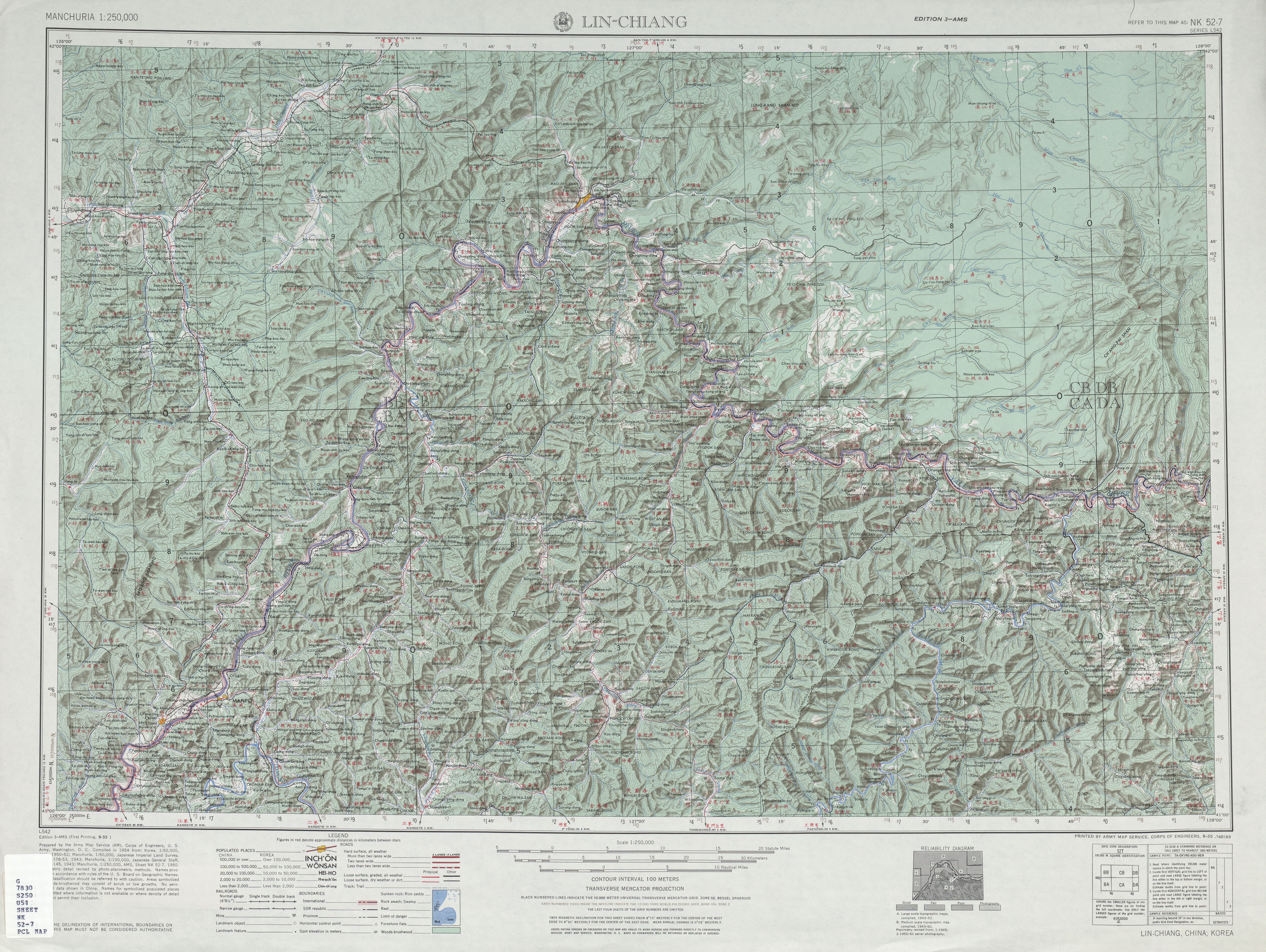Linjiang, Jilin on:
[Wikipedia]
[Google]
[Amazon]
Linjiang (; listed as Linkiang on old maps) is a
 Linjiang has a
Linjiang has a
county-level city
A county-level municipality (), county-level city or county city, formerly known as prefecture-controlled city (1949–1970: ; 1970–1983: ), is a county-level administrative division of the People's Republic of China. County-level ...
in southern Jilin
Jilin (; Postal romanization, alternately romanized as Kirin or Chilin) is one of the three Provinces of China, provinces of Northeast China. Its capital and largest city is Changchun. Jilin borders North Korea (Rasŏn, North Hamgyong, R ...
province, People's Republic of China, located to the east of Tonghua
Tonghua () is a prefecture-level city in the south of Jilin province, People's Republic of China. It borders North Korea's Chagang Province to the south and southeast, Baishan to the east, Jilin City to the north, Liaoyuan to the northwest, ...
, and not far from the border with North Korea
North Korea, officially the Democratic People's Republic of Korea (DPRK), is a country in East Asia. It constitutes the northern half of the Korean Peninsula and shares borders with China and Russia to the north, at the Yalu (Amnok) and T ...
. It is a county-level city under the administration of Baishan
Baishan (, ko, 백산시) is a prefecture-level city in southeastern Jilin province, in the Dongbei (northeastern) part of China. "" literally means "White Mountain", and is named after Changbai Mountain (, also known as Paektu Mountain (Kor ...
.
Culture
During 1953–76, there was a total of twenty one Chinese films being shot on location in Linjiang, including '' Visitors on the Icy Mountain.''Geography and Climate
 Linjiang has a
Linjiang has a monsoon
A monsoon () is traditionally a seasonal reversing wind accompanied by corresponding changes in precipitation but is now used to describe seasonal changes in atmospheric circulation and precipitation associated with annual latitudinal oscil ...
-influenced humid continental climate
A humid continental climate is a climatic region defined by Russo-German climatologist Wladimir Köppen in 1900, typified by four distinct seasons and large seasonal temperature differences, with warm to hot (and often humid) summers and freez ...
( Köppen ''Dwa''), with long, very cold winters, and very warm, humid summers. Monthly average temperatures range from in January to in July, and the annual mean is . Though the annual total is generous, precipitation is quite low during the winter and rainfall is concentrated in the months of June through August. Sunshine is generous but falling far short of the central and western parts of Jilin; with monthly percent possible sunshine ranging from 42% in July to 60% in February, there are 2,232 hours of bright sunshine annually.
Administrative divisions
There are six subdistricts, sixtowns
A town is a human settlement. Towns are generally larger than villages and smaller than cities, though the criteria to distinguish between them vary considerably in different parts of the world.
Origin and use
The word "town" shares an or ...
and one townships under the city's administration:
Subdistricts
* Jianguo Subdistrict (), Xinshi Subdistrict (), Xinglong Subdistrict (), Dahu Subdistrict (), Sengong Subdistrict (), Dalizi Subdistrict ()
Towns:
* Huashu (), Liudaogou (), Weishahe (), Huashan (), Naozhi (), Sidaogou ()
The only township is Mayihe Township ()
See also
* Linjiang Yalu River BridgeReferences
External links
Cities in Jilin Baishan County-level divisions of Jilin China–North Korea border crossings Capitals of former nations {{Jilin-geo-stub